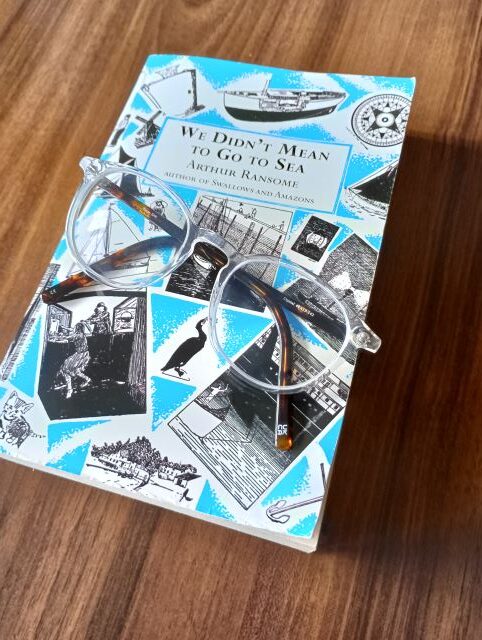The seventh Swallows and Amazons book, We Didn’t Mean to Go to Sea, is one of several by Arthur Ransome.
The Swallows (John, Susan, Titty and Roger) and their mother are waiting at Harwich for the return of their father. Soon, they meet Jim Brading, who agrees to take the Swallows as crew. However, fog quickly rolls in, causing the Swallows to unknowingly drift into the North Sea without Jim Brading. The weather continues to drive them away but results in the crew increasing by two. What happened to Jim? Will the Swallows make it back? If so, will they return before their father?
The Swallows, along with their mother and younger sister, appear in most other books in the series. However, this is the first book where Bridget, the Swallows’ sister, can talk. Also, this is the first book where the father of the Swallows is a character and not just mentioned. Susan’s responsible personality is very clear in this book: the Swallows promised not to go outside the harbour and after drifting into the North Sea, Susan was desperate to turn back as soon as possible.
Trust and responsibility are two closely related themes in We Didn’t Mean to Go to Sea. Mother trusts Jim to take care of the Swallows, who she trusts to not go out of the harbour. After drifting out the harbour in the fog, Susan wants to correct the mistake and go back as soon as possible. However, she trusts John to make the right decision and be responsible for everyone’s safety. John even takes them into the North Sea in order to decrease the chances of crashing. Sailing is another major theme: Jim Brading teaches the Swallows lots about sailing and they only survive because of John and Susan’s sailing abilities.
We Didn’t Mean to Go to Sea is set in both present and past, like all other books in the series. To the author, this book was set in the present, but to us it takes place in the past. This book is also set in real places: Harwich and the North Sea. Harwich is an English town on the coast just by the North Sea.
I would recommend this book to those who enjoy stories about sailing and adventure. In terms of age, I believe those ten or older will enjoy the book most. While 8-year-olds would be able to understand the plot, this story doesn’t have much humour and therefore may not be fully enjoyed by younger audiences.


